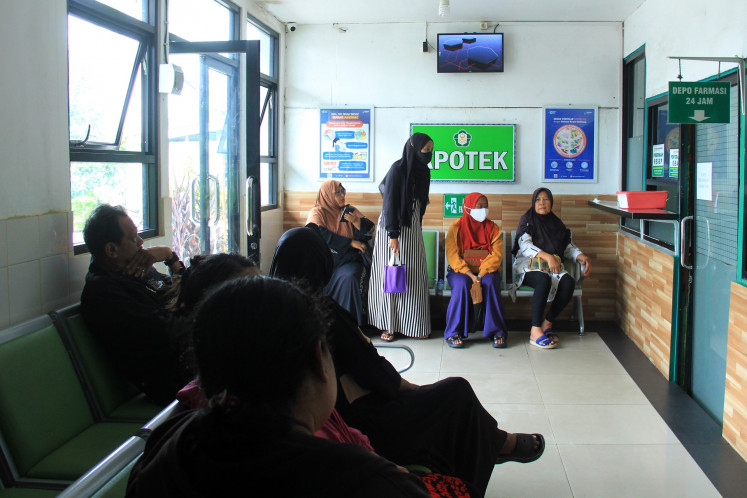Popular Reads
Top Results
Can't find what you're looking for?
View all search resultsPopular Reads
Top Results
Can't find what you're looking for?
View all search resultsDaily COVID-19 cases decline, in line with virus testing
The low number of reported daily cases was not a strong basis to assume that the COVID-19 situation had improved, especially in countries with low levels of testing like Indonesia.
Change text size
Gift Premium Articles
to Anyone
In the past few days, the number of COVID-19 infections has shown a downward trend.
At the end of September and early October there were almost 5,000 positive cases daily, lately the number has decreased to below 3,000 cases.
The number of COVID-19 positive cases reported on Oct. 31 was 3,143, down to 2,696 the next day and 2,618 on Monday before a slight increase to 2,973 on Tuesday.
However, although the reported number of daily cases has decreased, the number of tests has also declined.
The KawalCOVID19 initiative has recorded a decrease in tests and specimen examinations across the country.
Acting director general of disease prevention and control at the Health Ministry, M. Budi Hidayat, said the decline in tests was because cases had also tended to fall.
"The number of suspected cases has dropped, as well as the number of samples. In some provinces, cases have tended to fall, hopefully it will be a good trend," Budi said Monday as quoted by kompas.com.
Referring to data from the World Health Organization, the number of suspected infections had continued to increase from the end of September to the end of October.
Meanwhile the number of tests and specimen examinations has also decreased, which has caused a widening gap between suspected cases and tests being carried out.
In response to the decline in the capacity of COVID-19 testing, Indonesian epidemiologist at Australia's Griffith University, Dicky Budiman, said that this could be vital, because we did not have an understanding of the real pandemic map in the country.
According to Dicky, the low testing capacity is a classic problem in Indonesia, and there has not been any change. "Many policy makers will assume the situation has been brought under control due to the low coverage of testing. it will mislead them into making decisions in response,” he said.
He added that the low number of reported daily cases was not a strong basis to assume that the COVID-19 situation had improved, especially in countries with low levels of testing like Indonesia.
From the modeling chart from four institutions the estimated average number of new daily new COVID-19 infections in Indonesia is still high, he said.
The four models came from Imperial College London (ICL), the Institute for Health Metrics and Evaluation (IHME), Youyang Gu (YYG) and the London School of Hygiene and Tropical Medicine (LSHTM).
"All four models agree that the actual infections in Indonesia far exceeds the official number of cases reported," said Dicky.
He emphasized that the initial indicator for the reduction in COVID-19 cases could not stand alone. The lead indicator must be combined with the positive rate in Indonesia, which is still above 10 percent.
"It's still very high and is not something positive. The mortality rate, which is relatively stagnant in double digits, is a signal, next year it could be worse, this is not something that can be over in a year. Testing should be increased evenly and equally," explained Dicky. (iwa)










